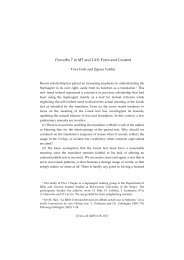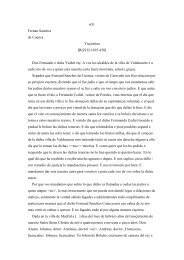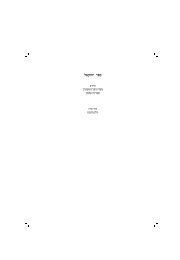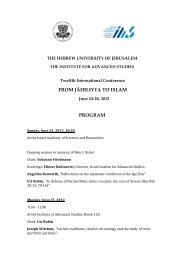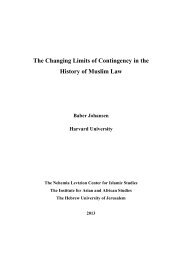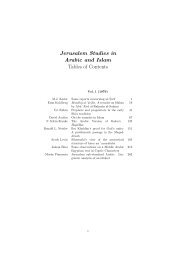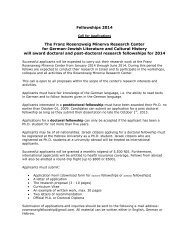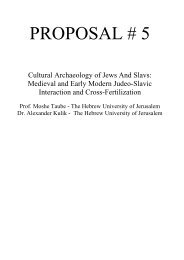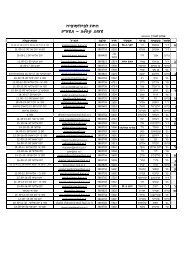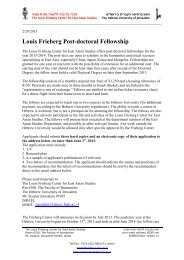THE BOOK OF EZEKIEL Moshe H. Goshen-Gottstein Shemaryahu ...
THE BOOK OF EZEKIEL Moshe H. Goshen-Gottstein Shemaryahu ...
THE BOOK OF EZEKIEL Moshe H. Goshen-Gottstein Shemaryahu ...
You also want an ePaper? Increase the reach of your titles
YUMPU automatically turns print PDFs into web optimized ePapers that Google loves.
III. Apparatus I: The Versions<br />
original language. A suggested retroversion or seemingly appropriate exegetical solution is<br />
given in the explanatory notes.<br />
a) Graphic symbols: 46<br />
+ plus, addition to the base text (`)<br />
~ difference in word order, transposition of words or parts of a sentence 47<br />
rst cross reference to a similar reading in another apparatus 48<br />
# $ retroverted reading, or a reading ‘issuing from’, or ‘developing towards’<br />
, taken as a single syntactic unit in a version, or marked with a conjunctive<br />
accent in x<br />
v read with a division between the parts of a sentence in a version, or with a<br />
disjunctive accent in x<br />
\ derivation from a specific root or nominal form, frequently in connection<br />
with ‘lexic’ 49<br />
> lacking in a version<br />
… words left out in quote (ellipsis; see §43)<br />
= equals, in relation between versions (see §46)<br />
+ equals almost/approximately, in relation between versions (see §46)<br />
J equivalent with, appropriate rendition 50<br />
p indicates a parallel passage, as specified in the notes (see §50)<br />
; 7 reading causes necessary further change (in notes)<br />
* hypothetical form; no evidence in Hebrew, Greek, etc. morphology (in<br />
notes)<br />
Cf. also the sigla mentioned in §55.<br />
b) Symbols indicating phenomena take the place of explicit quotations and as a rule require<br />
no comment: 51<br />
coniug<br />
dem<br />
variant relating to the conjugation of the verb (binyan), for example<br />
qal/pi5el; qal/hiph5il, etc.<br />
variation pertaining to a demonstrative pronoun, including plus or minus<br />
46 Parentheses serve in the usual manner.<br />
47 In case of transpositions the marker also appears at the appropriate place in the lemma. Cases of<br />
transposition in LXX of Ezekiel are discussed in G. Marquis, “Word Order,“ Textus (above, n. 6).<br />
48 Cf. above, §18. Cross-references, even if a reading is only partially parallel, are from Apparatus I, to<br />
II, III, and/or IV, from Apparatus II to III and/or IV, and from Apparatus III to IV. There are no<br />
references in the reverse direction.<br />
49 Homographic roots are separated by Roman numerals, according to the listing in BDB (cf., e.g.,<br />
26:10, n. 1, 16, n. 4).<br />
50 Used in the notes. In most cases the equivalence is a ‘real’ one, that is, it is attested elsewhere. For<br />
others, the equivalence may be hypothetical.<br />
51 This and the following lists present the most important items in the ‘index of phenomena’ (cf. above,<br />
§34), and include comments in the notes when necessary.<br />
xxiii



